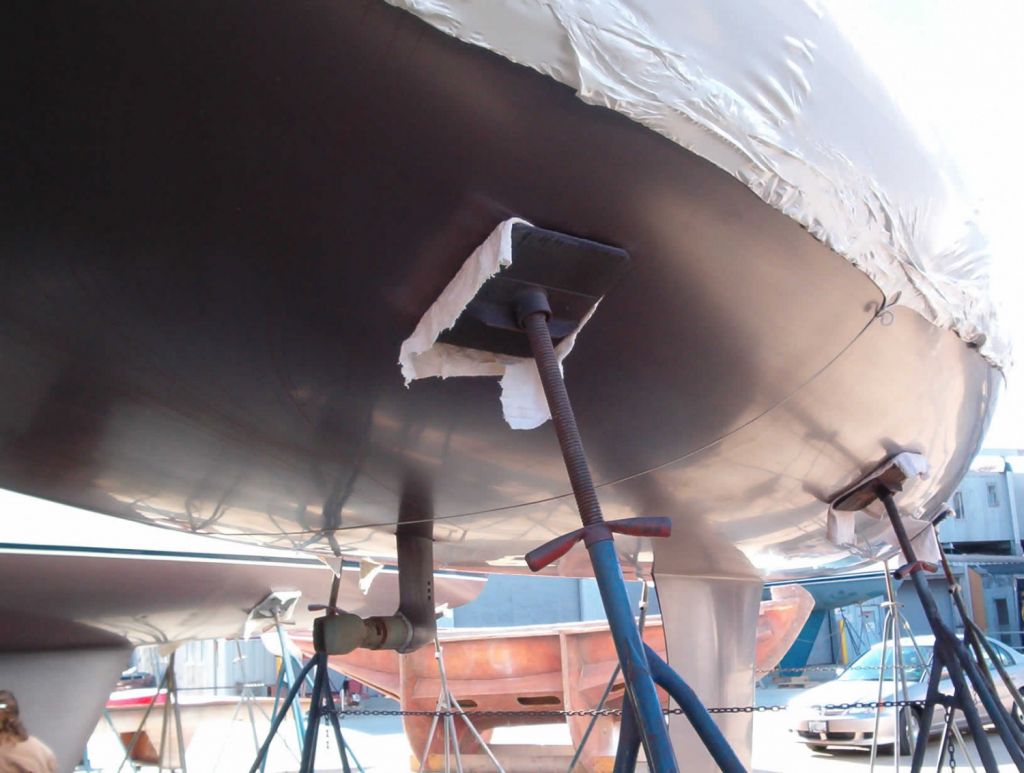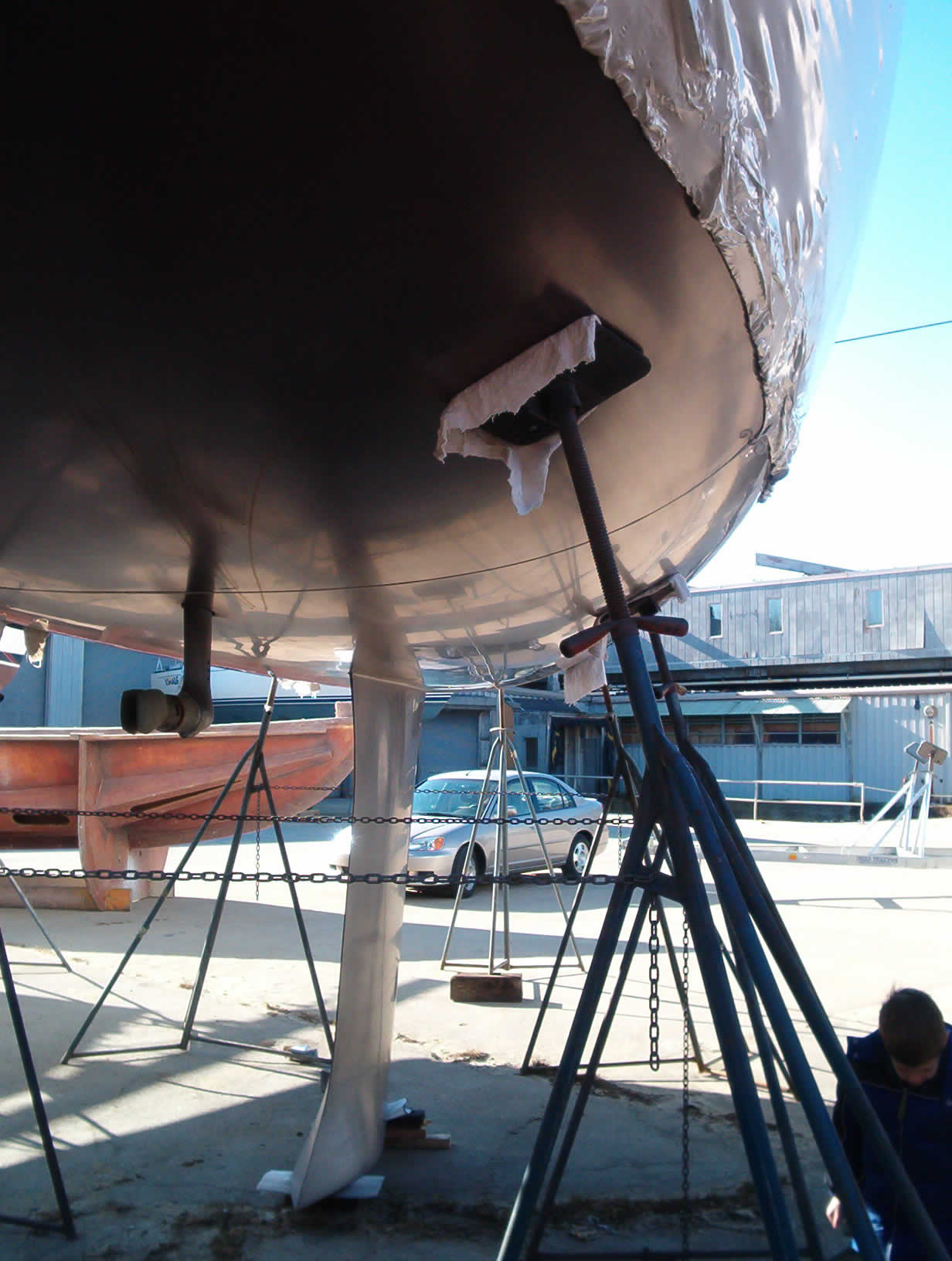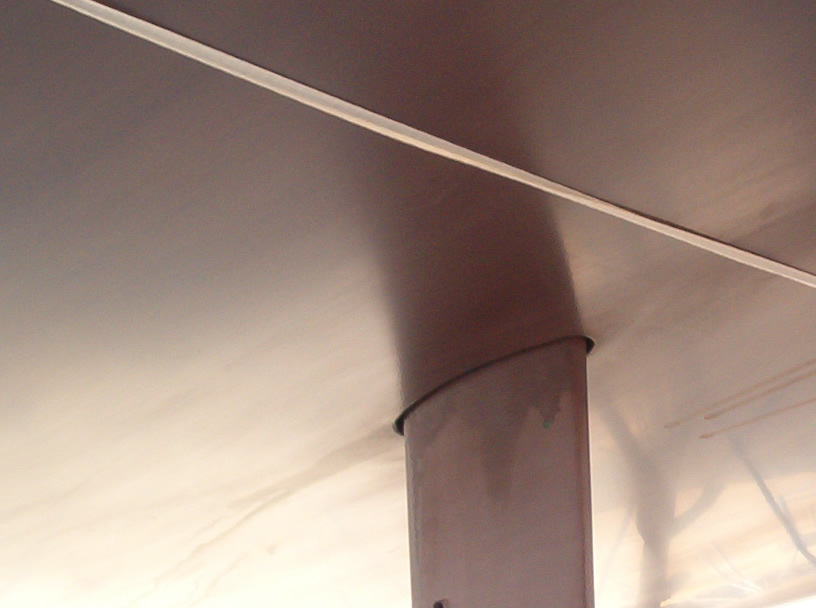The Fastest Boat Bottom Paints: Antifouling for Speed
Whether you're racing your boat or cruising casually, everyone wants to sail faster. Is there a bottom paint that will make your boat sail faster? And is it right for you?
What are The Fastest Boat Bottom Paints? The fastest bottom paints are vinyl or Teflon based hard paints, which can be wet sanded and burnished to a smooth finish.
Maintaining a fast, racing finish with these paints requires more maintenance than a hard copolymer or a softer ablative paint. It is more maintenance, but it can make a big difference in boat speed.

On this page:
What Slows You Down
In a word: friction. Friction causes turbulence and drag
Without requiring a degree in Computational Fluid Dynamics to explain it, a rough bottom is slower. More friction is slower - think about rubbing your hand across a carpeted floor versus a glass table top with a little oil spilled on it. Which is easier? Now imagine you're playing with a toy boat on either surface. If you push the boat, which one will be easier to push? Which might even keep sliding a little if you let it go?
Getting more into the science (still without the degree!), when fluids move over a surface there is a "boundary layer," the layer of fluid closest to the surface skin. When a hard surface moves through a liquid, molecules of the liquid get dragged along with it. This increases "skin friction" and causes drag. The faster something moves, the more drag.
If the flow of molecules in the boundary layer is "laminar", it is evenly spread and more calm. A "turbulent" boundary layer pulls more water with it and causes more friction and drag. A smooth bottom helps maintain laminar flow and reduce turbulence and drag as the boat speeds up.
These forces can be considerable if a boat bottom is not a fair surface, and the effect is more pronounced at higher boat speeds.
Given the power provided from your sails is constant, a boat with less drag will move through the water faster.
Bottom Preparation is Everything
Spraying a layer of VC Offshore or Baltoplate on your boat will not make it instantly faster. To get the full benefit of a hard, fast bottom paint job the surface bottom must be prepared with care.
- Old incompatible bottom paint must be stripped. You can't put a Teflon based paint over an ablative or copolymer paint. It won't stay on.
- The bottom should be "faired." The aim is to create a smooth, curved surface with no bumps, dips or ripples. This is labor intensive and requires expertise and a keen eye to fair a hull.
- The bottom should be sanded smooth after fairing and before painting. Even if an orange is round and fair, if you spray paint it you will not end up with a smooth surface. You must start with a smooth surface.
- For a fast finish, spraying gives an even, smoother coating and reduces the amount of sanding time. Rolling hard bottom paint makes little sense because of the increased work from the rough paint application.
- Sanding and wet sanding is a must. Sprayed paint will still feel rough to the touch. For a fast finish sanding and wet sanding with up to 400 grit sandpaper will get results.
- Burnishing is a step even farther than wet sanding, and can give a mirror finish to a well prepared bottom.

Maintaining the Finish
Hard bottom paints designed for racing are not as effective at preventing grown as softer ablative paints or copolymers. They don't hold as much active antifouling, and it doesn't leach out of the paint or get refreshed since the paint doesn't slough off. And wet sanding and burnishing both remove some surface active ingredients.
In high growth areas, a racing finish with require constant maintenance and cleaning. When I raced my last boat, I had a diver come every week to clean the bottom and we dove on the boat ourselves at major regattas. You won't get hard growth quickly, but you will get slime buildup in very little time which can slow you.
You may not get two seasons from a coat of racing paint. If you don't, you'll want to wet sand it before the start of the season to ensure everything is smooth and ready again. The good news is that a properly prepared bottom is easy to re-spray and sand back to a good finish compared to the first time you do it.
Alternatives to Hard and Burnished
What if you don't dive, can't clean your boat regularly, or don't want to pay a diver? Maybe you just want to go faster but aren't a speed-mad racer looking for every 1/10th of a knot speed extra?
Dry sailing for smaller boats is very popular. Fair the bottom and leave it unpainted or put on an underwater epoxy paint. As long as you don't store the boat in the water for more than a couple of days during a regatta there shouldn't be any growth. Most dinghies are dry sailed. Many smaller boats kept at clubs or marinas with a crane have this option, though there may be a cost to haul and launch.
If you stay in the water, a good choice is a hard copolymer paint. These are often referred to as "self polishing," as they smooth themselves with use as the paint sloughs off. Many of these are quite hard and can be carefully sanded to a smooth finish. Since they’re softer, you don’t want to sand through the paint. With proper preparation before painting, a sprayed paint job, and a little sanding, your bottom can be almost as fast as the high maintenance race boats.
Even without the sanding, a good bottom preparation before painting can give you more speed on passages. These paints are popular with long distance cruisers and people who use their boats frequently. You'll lose a little edge if you're racing, but you won't put yourself at the back of the fleet with it.
How Much Faster is It?
"What are you getting for your money" is a common question when preparing a boat for racing. The faster bottom and the newest sails won't win races for you if your crew can't tack or gybe and you can't spot wind shifts. You can lose the entire advantage of that quarter knot speed increase with a blown tack or a missed shift.
From personal experience, replacing a rough, coarse, orange-peel looking bottom with a polished and burnished bottom made a big difference. Both in my boat speed, and my wallet. It was expensive to do and expensive to maintain. But the boat was faster, and we were racing competitive regional events. The difference was most noticeable at low speeds and in light air.

There is not a lot of empirical data about how much faster a burnished Teflon bottom is over a well prepared copolymer paint. So the answer is "yes, it's faster," but with your boat, your budget, and your application there’s no way to predict that you may be 5% or 10% or half a knot faster.
To the casual club racer or cruiser, is it worth the time and money to prepare and maintain the fastest of possible finishes? It may not be; that's a question that only you can answer.
What Are Your Goals?
The best choice for a fast bottom comes down to you, your boat, and how you will use it.
- Are you a racer? If yes, is it weeknight club racing, or are you racing at higher level regional events against serious racers?
- If you cruise, how much maintenance are you willing to do to keep every extra fraction of a knot of speed?
- Where do you sail? Some areas have more aggressive growth than others. A sailor in the Great Lakes may get away with a hard bottom paint with less work than a New England coastal racer or a cruiser in the Caribbean.
- What is your budget for bottom preparation and maintenance? Are you willing and able to do some yourself?
- What us the current condition of your bottom? How ready is it for a top quality refinishing?
Racing vs. Cruising
You will find very few non-racers who take the time and effort to apply the fastest bottom paints. The cost/benefit/effort analysis doesn't show a reasonable payback for what you get.
Most sailors aren't taking their boats to world-class regatta venues, they're taking off for weekends and vacations and maybe doing the club series on Wednesday nights or the annual regatta. Most of those boats are not going through the expense and effort for a competitive racing finish.
On the other hand, if you're racing in a competitive one-design fleet at New York Yacht Club Race Week or the San Diego NOOD Regatta, you can bet almost every boat in your fleet will have a smooth, wet sanded finish.
Did you find the answer to your specific question?
👍 7 👎 2


Leave a comment